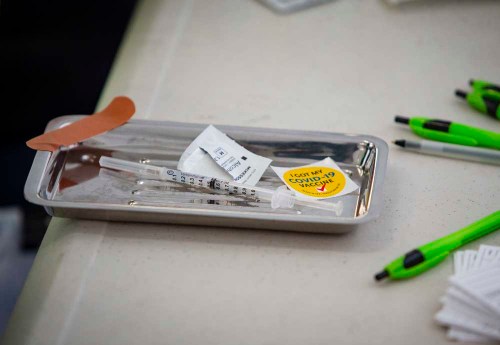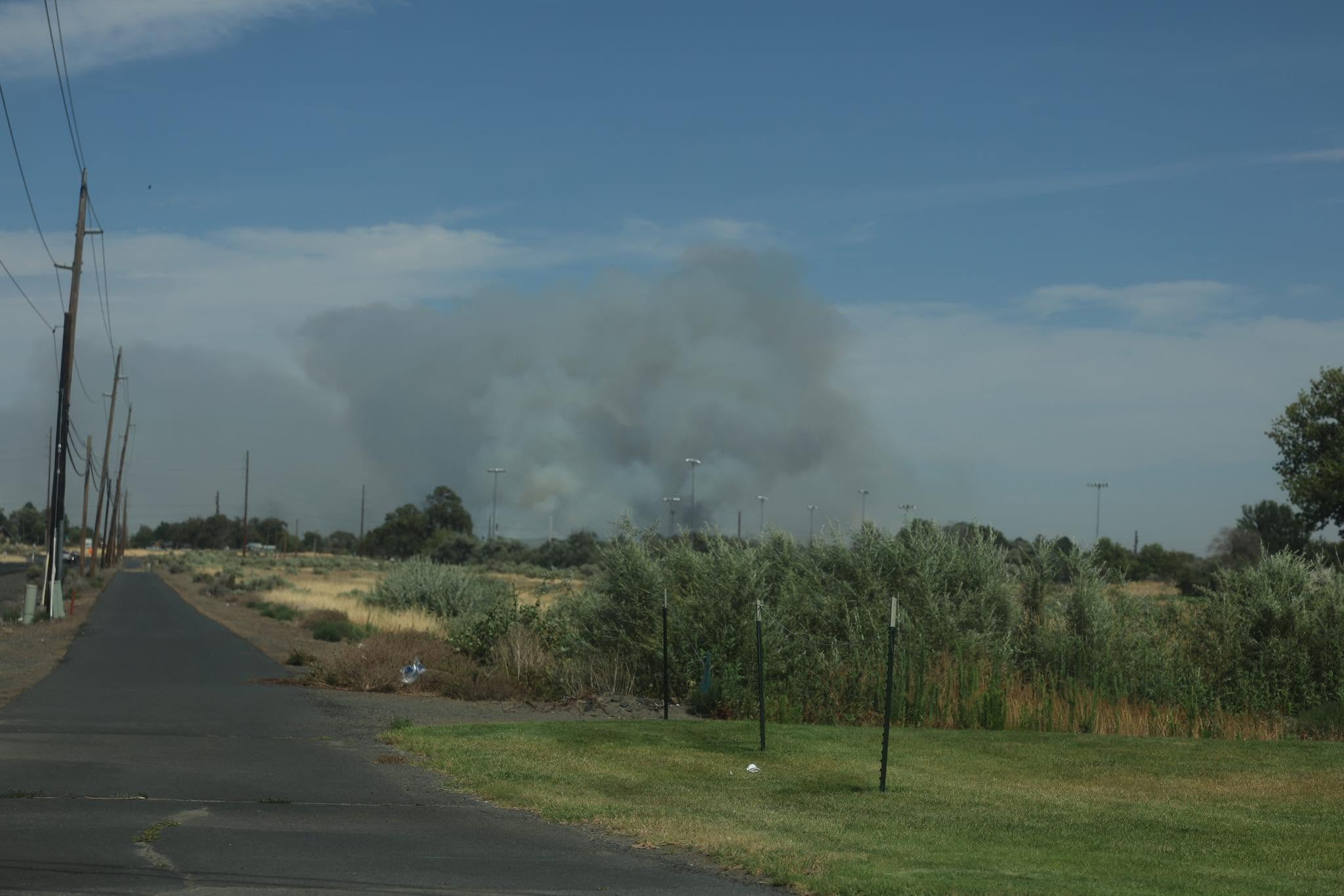Oregon Health official: Feeling we’re at pandemic ‘finish line’ driving increase in COVID-19 cases
Published 9:00 am Thursday, April 8, 2021

- A dose of the Moderna COVID-19 vaccine awaits distribution at a Umatilla County Public Health mass vaccination site in Pendleton on Friday, March 26, 2021. Low-income rural Oregonians remain largely unvaccinated against COVID-19, despite many months of pro-vaccine campaigns, the increasing ease of getting a shot and a growing glut of vaccine, the latest data on Oregon Health Plan members show.
SALEM — COVID-19 infection rates are rising again in Oregon, but the growing number of vaccinated residents will likely blunt the severity far short of last year’s spikes, state health officials said Wednesday, April 7.
The forecast came during an appearance by Oregon Health Authority Director Pat Allen and State Health Director Dean Sidelinger on a virtual hearing of the House Subcommittee on COVID-19.
Much of the nation is seeing a sharp rise in cases of the more contagious and virulent B.1.1.7 mutation of the COVID-19 first seen in Britain. But in Oregon, two less harmful forms of COVID-19 are “crowding out” the U.K. variant for now.
The UK variant — 50% more contagious and likely more lethal — now makes up about 32% of new infections in the U.S.
The two variants from California are more dominant in Oregon. The California variants are about 20% more contagious than the original virus, but so far have not been shown to be significantly more virulent.
Sidelinger said the variants are “in competition” and the dominance of the California variants gives Oregon “a little more time” to vaccinate residents than states in the east and Midwest.
“We are a different pandemic than the rest of the country,” said Sidelinger, the state’s top infectious disease expert.
Sidelinger said the spread of even the slightly more contagious variants mixed with people getting out more and seeing others was fueling the upswing.
“Travel is up, people are moving about more,” Sidelinger said. “The feeling that we are at the finish line is driving the increase.”
Gov. Kate Brown said last week that a “fourth wave” of infections was hitting Oregon.
“This virus is at our doorstep — our numbers are rising and we are back on alert,” Brown said during an April 2 press conference.
After falling steadily since January, new cases bottomed out in late February at 249 per day on average. The case count rose to an average of 419 cases per day at the end of March. During the winter spike, daily average cases in early December topped 1,500.
If residents stop wearing masks, practicing social distancing and limiting their contacts, the number of cases could double by next month, according to OHA forecasts.
“These are still concerning numbers in their height and obviously the direction they are going,” Allen said.
The virus reproduction is up above 1:1 — meaning one COVID-19 positive person infects one additional person — for the first time since January. It is getting close to the levels that led to the two-week lockdown in December.
However, Sidelinger said it was unlikely that the kind of infection growth seen at the end of last year will occur again because of the growing number of vaccinated people. New infections are increasingly in younger age groups, who are less likely to suffer severe illness or death than those 65 and over.
Oregon is six to eight weeks away from availability of vaccine equal demand. By late May or early June, there will be more vaccine than people seeking shots, OHA reported. It took from late December to March 3 for 1 million shots to be put in Oregonians’ arms. The state passed two million shots this week, just a month later.
Oregon has topped 40,000 shots per day three times now and is averaging about 35,000 daily shots. Most are the Pfizer and Moderna vaccines, which require two doses given about a month apart.
The state has injected more than 55,000 doses of the one-shot Johnson & Johnson vaccine into residents. State officials had counted on the simpler, more portable vaccine to boost the percentage of residents who are completely vaccinated.
A subcontractor at a Baltimore facility creating the vaccine botched 15 million doses set to be distributed nationwide. Instead of going to states, the doses are being destroyed. For Oregon, that means the flow of Johnson & Johnson vaccine will slow to a trickle as good doses already in the distribution system are used up. OHA reported it will receive 60,000 doses of Johnson & Johnson vaccine this week, but just 8,000 next week and 2,000 the week after.
“That is a big hit to our supply,” Allen said.
Oregon residents aged 70 or more have accounted for just over 75% of the state’s more than 2,400 deaths from COVID-19, according to OHA data.
Allen said over 70% of people 70 and older have been vaccinated, with the 30% unvaccinated including those who declined to get shots.
But as the minimum age for vaccination eligibility dropped to 65 on March 1, the demand for vaccination has slowed, Allen said. Only 65% of residents 65-69 have been vaccinated. In some rural parts of Oregon, the number is under 50%. While the inability to get to a vaccination site accounts for some of the lower than expected figure, there is a significant portion of the age group that does not want to get vaccinated now, vaccinated at all, or are waiting for the one-shot Johnson & Johnson vaccine.
“That seems to have semi-topped out,” Allen said of demand in some areas.
The state originally allocated each county an amount of vaccine equal to their percentage of the state’s population. But with widely differing levels of demand across the state, supplies will be redirected in the near future to places where demand is high but supply is low.
Sidelinger and Allen said they are concerned about the recent increase in infections, but believe the worst can be over if residents don’t act as if the pandemic is going away anytime soon.
The increasing number of vaccinated people will “bend the curve” back down as long as masks, social distancing and hygiene recommendations are followed.
To those feeling “stir crazy” to get back to leading something close to a normal life, Sidelinger said the fastest route was to not let up too early.
“These changes are a for-now thing, not a forever thing,” Sidelinger said.









